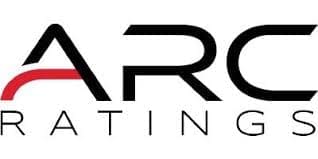TRANSACTION OVERVIEW
This transaction is a cash securitization of non-performing loans (NPLs) contracts originated in Italy. The portfolio includes non-performing loans originated by 12 banks: Banca Agricola Popolare di Ragusa S.c.p.A., Banca Popolare di Sondrio S.c.p.A., Banca Popolare del Lazio S.c.p.A., Blu Banca S.p.A., La Cassa di Ravenna S.p.A., Banca di Imola S.p.A., Banca Popolare Pugliese S.c.p.A., Banca Popolare di Puglia e Basilicata S.c.p.A., Banca di Piacenza S.c.p.A., Banca di Credito Popolare S.c.p.A., Banca Popolare di Fondi Soc. Coop. and Banca Valsabbina S.c.p.A. – ARC Ratings currently does not rate any of the aforementioned banks. The portfolio includes non-performing loans with a Gross Book Value of EUR 790.5 million. The cut-off date of the portfolio was January 2021. In terms of real estate value (REV), the first lien secured part of the portfolio is made up of mainly residential (48.9%) and commercial/industrial (34.2% when offices and hotels are included) properties in Italy.
RATING RATIONALE
The main rating drivers are ARC’s expected recoveries from the asset portfolio and its timing. ARC has analyzed not only the Italian macroeconomic situation but the specifics of the real estate market to derive its assumptions. Another relevant rating driver is the special servicer’s historical records and its experience with these types of assets. Counterparty risk analysis was performed following the Global Structured Finance Criteria (September 2021). The ratings also consider the different credit enhancement mechanisms providing protection to the rated notes: The cash reserves, the interest rate hedging agreement, and the subordination triggers. ARC has applied a different type of analysis to each class of the non-performing loans, they were classified as secured and unsecured. The recoveries were calculated based on the appraisal values provided by the servicer. For the secured portion, these recoveries were haircut based on the liquidity, historical value declines, and the particular view of ARC on the Italian real estate market. For the unsecured exposures, we used the historical data provided by the servicer plus ARC’s proprietary data. We calculated a base-case scenario that was then stressed according to the class’s respective target rating levels, taking into account the weighted average seasoning of the portfolio of 6.3 Years.
KEY RATING DRIVERS
Cash Reserve: A cash reserve representing 4.0% of the total outstanding balance of Class A, protects the transaction from temporary cash shortfalls, covering senior expenses and interest on Class A. The reserve is financed through a limited recourse loan that will be repaid proportionally to the Class A principal payments and ranks senior to Class A principal payments. The cash reserve would be sufficient to pay approximately 5 periods of the Class A interest payments at the maximum cap rate. A relatively high portion of real estate loans with updated valuations: 89.0% of the properties included in the secured non-performing loans segment has a valuation date after 2020, based on the REV for the first lien assets. Properties located in the North of Italy: Properties located in the North of Italy represent 52%, Lombardia represents 40.8% of these properties in terms of REV for the first lien loans. ARC considers that the economic conditions and court speeds tend to be better in the central/northern Italian regions. Historically Lombardia has been a region where Commercial/Industrial properties were more liquid in Italy. Historical data received from the special servicer: ARC received from the special servicer (value), specific data that provided a foundation for the analysis of the timing and level of the recovery rates for both the secured and the unsecured part of the portfolio. The information includes more than 100,000 data points that also include information of the property type, legal procedures, and location of the properties.
Interest rate cap: The SPV has entered into an interest rate cap spread mechanism with Societé Generale that allows the SPV to receive the difference between 6 months Euribor and the strike price. The notional covers the balance of Class A Notes and amortizes as defined at closing. The cap rate increases progressively from 0.2% at closing to 1.2% by 2037.

